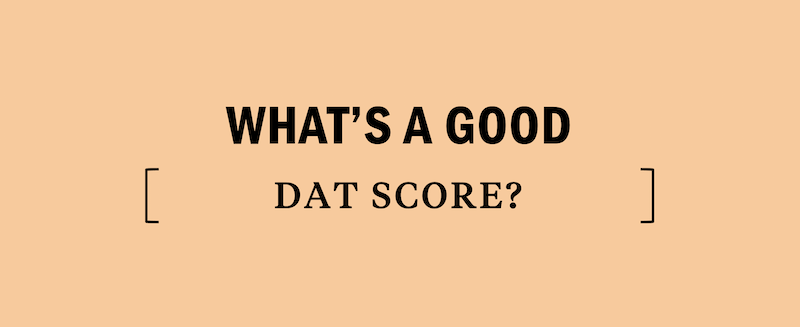What's Tested on the DAT: Reading Comprehension
The third section of the DAT is Reading Comprehension. This sections contains three passages consisting of approximately 14 paragraphs. Each of the three DAT passages will be accompanied by 16–17 questions for a total of 50 questions per section. The questions associated with each passage are designed to test your ability to read, comprehend, and analyze basic information in a scientific context. You will have 60 minutes total to complete this section, so allot 20 minutes per passage: up to 8 minutes for reading the passage itself and at least 12 minutes for answering the questions. This will give you approximately 40–45 seconds per question. Neither every passage nor every question should take the same amount of time due to varying difficulty and length, so use these numbers as guidelines rather than hard rules.
The passages themselves generally come from published works and always relate to science. The intent of the author may be to inform, persuade, or speculate, but usually the author’s tone remains roughly neutral due to the nature of the content. Subtle clues may indicate an author is for or against certain ideas, but these opinions will rarely be extreme. Outside knowledge of each field is not required to answer questions correctly in this section, and the passages are meant to cover material you do not already know. Nevertheless, rough familiarity with the general vocabulary and writing style used in each field can build your confidence and speed you up on Test Day. Reading through recent editions of journals, such as the Journal of the American Dental Association and Science, and magazines, such as National Geographic and Scientific American, will increase your familiarity with this type of material.
Reading Critically on the DAT
Ordinarily, people read for one or both of two reasons: to learn something or to pass the time pleasantly. Neither of these reasons has anything to do with the DAT. So what do you really need to get from reading a DAT passage that’s different from everyday reading? Broadly stated, there are two primary goals in reading a passage: reading for purpose—the why of the text and what the author wants you to learn from the passage—and reading for structure—the how of the text and the way in which the author presents the ideas. Every Reading Comprehension question type fundamentally hinges on your ability to step back from the text and analyze what the author is stating, why the author is writing in the first place, and how the author puts the text together.
Notice the theme here: it’s all about the author. You’ll get questions about the author’s ideas, her purpose, what can be inferred from what she writes in the passage, and how she puts it all together. If you understand little more than the author’s intent, you’ll still have enough to get started with the questions, so your focus as you read must always be on the author. Therefore, pay attention not only to what details are present and where they are but also why they are there. Details are the “what” of a passage, and they never exist in a vacuum; they always support an idea.
To make the most of your limited reading time, take quick notes on your noteboard as you finish reading each paragraph. These notes will make up your roadmap, a literal map of the passage that shows you where to look when you need to go back and find a specific detail. Forming a roadmap also helps guide your thought processes during your first pass. You can feel confident reading quickly and focusing on the big picture ideas while ignoring most of the details because you will know exactly where to look should the need for one of those details arise.
Reading Comprehension Question Strategy
The test makers use the same types of questions in every Reading Comprehension section. You’ll see some comprehension questions that test about basic facts from the passage, but you also can expect other questions that test a deeper understanding of the ideas through analysis and evaluation, so it’s important to be prepared for various levels of critical thinking. Although you won’t earn any points directly by identifying what type each question is on Test Day, identifying question types will help you make efficient predictions and avoid wrong answers.
Guide your studying to be sure you get practice with all of these questions types before your official DAT. And, if you start each Reading Comprehension problem on Test Day by identifying the question type, you’ll be able to focus more on the information you need to correctly answer the question. Just like with the other test sections, the timing of the Reading Comprehension section can make it difficult, so honing your test-taking skills to make yourself faster and more efficient is key to your success.


